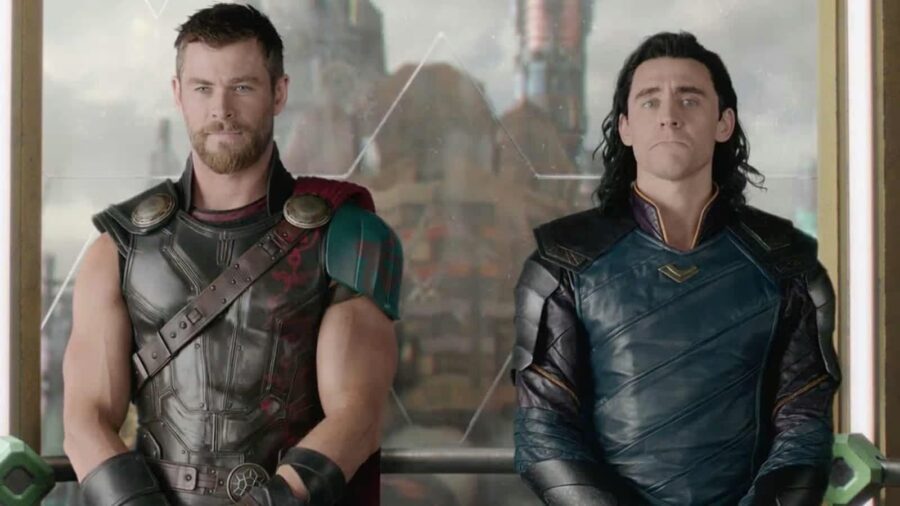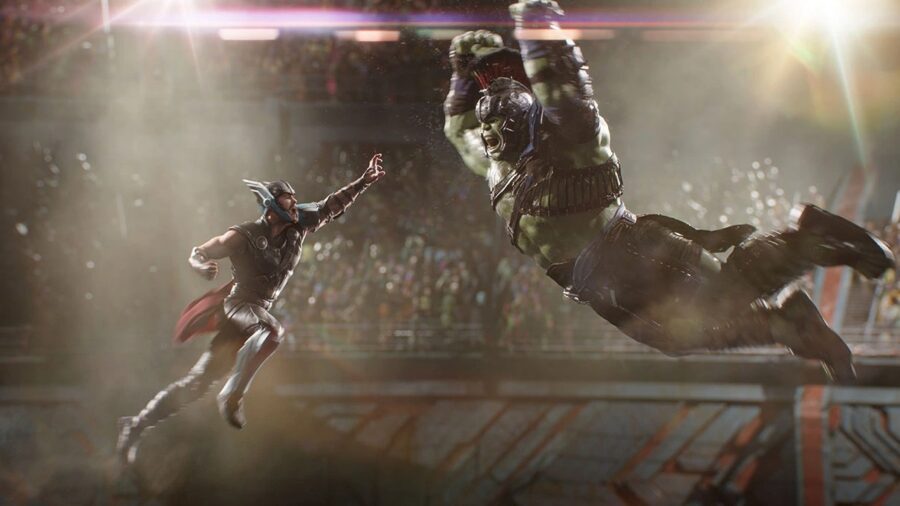Thor Ragnarok Has More Norse Lore Than You Realize

While the Thor films in the Marvel Cinematic Universe are based on the Marvel Comics written by Stan Lee, those comic books are loosely based in Norse mythology. What’s great about Thor: Ragnarok is that we actually get nods to that lore within the film.
A Complex Lineage

Stan Lee took the concept of the Norse gods — Odin, Frigga, Thor, and Loki — and turned them into fun, entertaining stories about superheroes. He added Thor to the Avengers, and created a whole new line of stories for our hero. And while we love Thor, his relationship with Jane, which brings him firmly to Earth, and his battles with his brother and nemesis Loki, there is much to love about the mythology as well.
In Thor: Ragnarok, the comic book and the lore come together.
The primary differences to note between the Thor storyline in the MCU, including Ragnarok, and the lore, include the following: while Thor is the son of Odin, he is not the son of Frigga. Frigga, or Frigg, is the goddess of fertility and the wife of Odin, but Thor is actually the son of Odin’s mistress, Jord, who is a giantess. In Norse mythology, the gods take the name of their father, which we see in the comics when Thor calls himself Thor Odinson.
Liberties With Loki

Further distinction between Thor: Ragnarok and the lore involves Loki. You see, Loki is not the son of Odin, nor is he brother to Thor. In fact, in the mythology Loki is not even included among the primary gods in Asgard.
He’s a trickster figure who is considered the god of mischief, an outlier among the Norse gods. Indeed, in all the stories, Loki is usually messing with Thor and the other gods.
Loki Laufeyson

Loki is the one figure in Norse mythology who does not take his father’s name. Farbauti, Loki’s dad, is a well-known Norse god and a giant. His mother, Laufey, was so beloved by Loki, that he took her name instead.
You’ll often hear Loki referred to as Loki Laufeyson. If you’re wondering about the concept of witchcraft that so often comes up in Thor: Ragnarok and the other films, you’ll have to look to the lore once more. Loki fell in love with a witch named Angrboda, and together they fathered Hel, a girl who lost the use of her legs who ruled the underworld, a wolf named Fenrir, and a giant serpent named Jormungandr.
The Frigga And Hela Disconnect

Now we get to the Thor: Ragnarok nods that come from the lore. Clearly, the reference to Loki being a witch in the beginning is a nod to his long-time lover, Angrboda and the mother of his children. Then, you’ll notice that despite the fact that Hela (Cate Blanchett) is supposed to be the first-born child of Odin, and presumably Frigga, and brother to Thor (Chris Hemsworth), who all have light hair and features, she arrives looking just like Loki (Tom Hiddelston).
She’s got the same pale complexion, black hair, and even the large headdress. They even both dress in green and black. This has to be a hint at the fact that, in the mythology, he’s her father.
Fenris And The Eternal Flame

Next, in comparing Thor: Ragnarok to the lore, we meet Fenris, the giant wolf dog that Hela brings back to life with the eternal flame. She even says, “Fenris, my darling, what have they done to you?” And finally, in the stories, Thor is supposed to be killed by Loki’s third child, Jormungandr, during Ragnarok — a prophecy.
The two are supposed to fight in the water, Jormungandr is supposed to bite Thor, and the two are supposed to fall over a cliff. Instead, Fenris and Hulk, a giant green monster, fight in the water, Fenris bites Hulk, and the two go over the cliff.
So Much Lore To Unpack

These kinds of nods between films and movies, mythology and books, retellings and re-imaginings are so much fun. For more background, I recommend the book The Witch’s Heart by Genevieve Gornichec, in which she goes into more detail and Angrboda. For more Marvel fun, I highly recommend streaming Thor: Ragnarok, which is one of the best Marvel films in the archives, with or without the lore.













